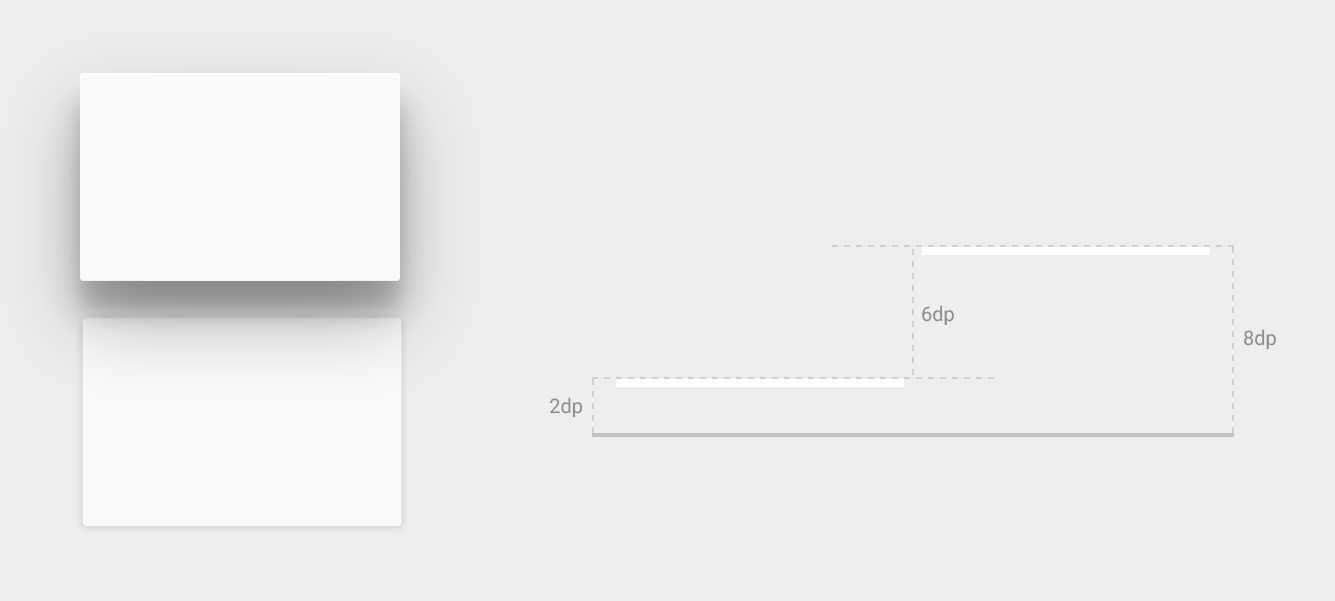标签:
Material design introduces elevation for UI elements. Elevation helps users understand the relative importance of each element and focus their attention to the task at hand.
The elevation of a view, represented by the Z property, determines the visual appearance of its shadow: views with higher Z values cast larger, softer shadows. Views with higher Z values occlude views with lower Z values; however, the Z value of a view does not affect the view‘s size.
Shadows are drawn by the parent of the elevated view, and thus subject to standard view clipping, clipped by the parent by default.
Elevation is also useful to create animations where widgets temporarily rise above the view plane when performing some action.
For more information about elevation in material design, see Objects in 3D space.
The Z value for a view has two components:
Z = elevation + translationZ

Figure 1 - Shadows for different view elevations.
To set the elevation of a view in a layout definition, use the android:elevation attribute. To set the elevation of a view in the code of an activity, use the View.setElevation() method.
To set the translation of a view, use the View.setTranslationZ() method.
The new ViewPropertyAnimator.z() and ViewPropertyAnimator.translationZ() methods enable you to easily animate the elevation of views. For more information, see the API reference for ViewPropertyAnimator and the Property Animation developer guide.
You can also use a StateListAnimator to specify these animations in a declarative way. This is especially useful for cases where state changes trigger animations, like when a user presses a button. For more information, see Animate View State Changes.
The Z values are measured in dp (density-independent pixels).
The bounds of a view‘s background drawable determine the default shape of its shadow. Outlines represent the outer shape of a graphics object and define the ripple area for touch feedback.
Consider this view, defined with a background drawable:
<TextView
android:id="@+id/myview"
...
android:elevation="2dp"
android:background="@drawable/myrect"/>
The background drawable is defined as a rectangle with rounded corners:
<!-- res/drawable/myrect.xml -->
<shapexmlns:android="http://schemas.android.com/apk/res/android"
android:shape="rectangle">
<solidandroid:color="#42000000"/>
<cornersandroid:radius="5dp"/>
</shape>
The view casts a shadow with rounded corners, since the background drawable defines the view‘s outline. Providing a custom outline overrides the default shape of a view‘s shadow.
To define a custom outline for a view in your code:
ViewOutlineProvider class.getOutline() method.View.setOutlineProvider() method.You can create oval and rectangular outlines with rounded corners using the methods in the Outline class. The default outline provider for views obtains the outline from the view‘s background. To prevent a view from casting a shadow, set its outline provider to null.
Clipping views enables you to easily change the shape of a view. You can clip views for consistency with other design elements or to change the shape of a view in response to user input. You can clip a view to its outline area using the View.setClipToOutline() method or the android:clipToOutline attribute. Only rectangle, circle, and round rectangle outlines support clipping, as determined by the Outline.canClip() method.
To clip a view to the shape of a drawable, set the drawable as the background of the view (as shown above) and call the View.setClipToOutline() method.
Clipping views is an expensive operation, so don‘t animate the shape you use to clip a view. To achieve this effect, use the Reveal Effect animation.
Material Design系列第四篇——Using the Material Theme
标签:
原文地址:http://www.cnblogs.com/bvin/p/4248470.html